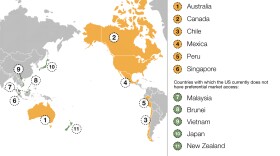By Michael Cohen
http://stream.publicbroadcasting.net/production/mp3/wkms/local-wkms-908146.mp3
Murray, KY – Imagine for a moment being a detective and this is the case to which you've been assigned: someone has been found, murdered, in a simple room with a door locked from the inside and a window sealed shut. By all appearances, no perpetrator could have entered or exited the room. This impossible scenario is a well established sub-genre in detective fiction and one in which writer and magician Clayton Rawson elaborated on in his acclaimed 1938 novel Death from a Top Hat. Commentator Michael Cohen peeks through the pages of this uncommon locked-room mystery.
Somehow while I was working on my book about detective fiction I missed this Golden Age minor classic. It is usually listed among the top ten locked room mysteries. The locked room mystery, which starts with the very first mystery story, Edgar Allan Poe's "Murders in the Rue Morgue," features a murder apparently committed in a room inaccessible from the outside. It is a nice puzzle, and one of the masters of this subgenre, John Dickson Carr, has his detective give a lecture about locked room murders and the various ways in which they can be accomplished, within a novel, The Three Coffins, about a locked room murder.
In Death from a Top Hat there are two locked room murders, but what makes this book uncommon among such mysteries is that the victims are magicians and all the suspects are either magicians or magicians' assistants or fellow travelers of some sort. And at one point in the book, the amateur detective, a magician and a seller of magicians' equipment, explains that the suspects are all so skilled in illusion that the murders could have been done by any of them that, essentially, any of the information the police have gathered about alibis is worthless.
The resulting moment of existential doubt may be unique in crime fiction. Effectively, what Rawson does is to blow the author's cover and show the absolute contingency of the murder mystery. What I mean by that is that regardless of what the author has given us in the way of seeming clues, he or she still has absolute control of the narrative, which will turn out as the author wants it to; that is, the "clues" are essentially meaningless because they can be made to point toward anyone with just a little more information or a little manipulation.
Clayton Rawson was a writer, an editor, an artist who illustrated his own books, and an amateur magician who was active in the Society of American Magicians. He also helped found the Mystery Writers of America. Rawson perceived that between the magician's art and the practice of mystery writing there exists a strong likeness in the need to conceal what is most important by diverting the attention of reader or spectator.
In the 1920s and 30s, there was a big to-do about "Fair Play" in mystery stories, and a group of writers called the Detection Club pledged that they would not publish mysteries in which the narrator's thoughts, or clues that the detective had discovered, or other important matters were concealed from the reader. But it is never really a fair game for the reader trying to guess whodunit. The author, whether he's actually a magician as Clayton Rawson was, can always have another trick up his sleeve.
Death from a Top Hat, by the way, was filmed in 1939 as Miracles for Sale, which was directed by Tod Browning and starred Robert Young.




